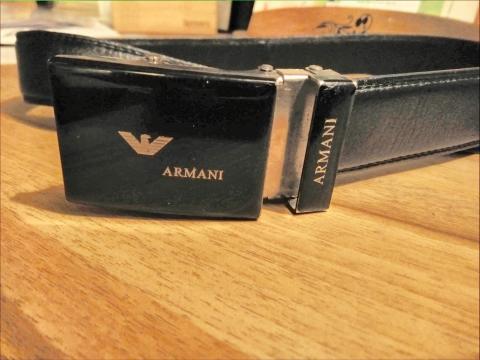Armani Belt

A few years ago, someone bought me a belt as a gift. With it, I did something that is socially unacceptable: I looked up how much it cost. In the bottom of its box was a jeweller’s receipt showing over 600 MYR, short for Malaysian Ringgit. I was curious to know how much this was in our Pounds Sterling. Knowing that 600 units of a foreign currency might only be eighty pence, I consulted the day’s exchange rates: the item had cost over £120. Spending such money on a mere belt usually indicates one is soft in the head, but these friends were wealthy- and kind. The belt did a good job of holding up my trousers and the slick Armani buckle attracted admiring comments from certain persons. As one might imagine with a designer belt retailing at an eye-watering price, the belt’s mechanism is rather complex, with a metal piece slotting into various ridges built into the back of the leather. From regular use, these began to wear away, and the belt is no longer fit for purpose. If I lost lots of weight, or put lots on, I might employ the remaining ridges. Until then, this expensive but redundant belt hangs in the wardrobe, waiting for me to throw it away.
I’m grateful for any gifts I receive, and I enjoyed wearing this belt while it worked. But all that money for so little use! Yet how many of us lavish time, energy and wealth accruing items we cannot keep. Isaiah asks ‘Why do you spend money for what is not bread, And your wages for what does not satisfy?’ The things we buy often wear or conk out; otherwise it is we who wear and conk out first. The things we own are only leased, and this often works out a poor investment:
Lay not up for yourselves treasures upon earth, where moth and rust doth corrupt, and where thieves break through and steal: but lay up for yourselves treasures in heaven, where neither moth nor rust doth corrupt, and where thieves do not break through nor steal: for where your treasure is, there will your heart be also.
Matthew 6
- Log in to post comments


 Sunday Worship 10.45am & 6.00pm
Sunday Worship 10.45am & 6.00pm